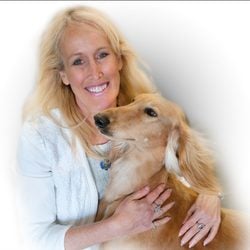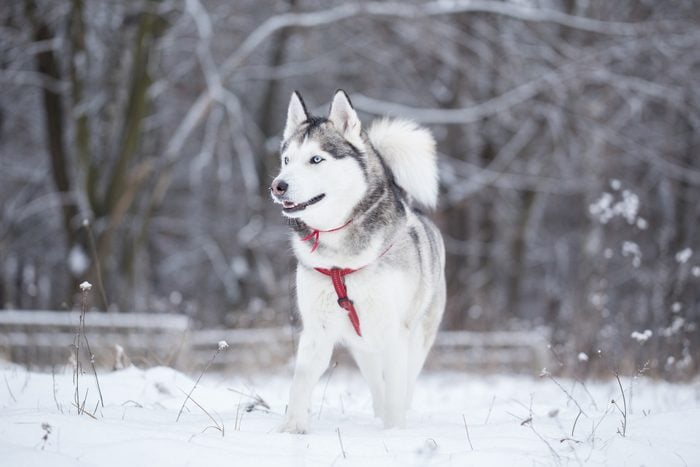
Wolflike dog breeds you’ll go wild for
If dogs are man’s best friend, then wolves are the friend of a friend whose life story you know but who you’ve never met in person. There are striking similarities between the two animals, not limited to the obvious: They’re members of the canine family that make humans say, “Aww!” As for so-called wolf dog breeds? Our friendly Canis familaris (domestic dog), whether tiny or giant, fluffy or hairless, lupine or otherwise, descends from wolves.
“Present-day wolves and dogs share a common ancestor, often called ancestral wolves, and while both are members of the Canis genus, there are some distinct differences due to their separate and distinct evolutions,” says Matthew McCarthy, DVM, a veterinarian at Juniper Valley Animal Hospital in New York City. The dog, which was domesticated at least 15,000 to 20,000 years ago, was the first animal to be domesticated—and arguably the most important. Early on, dogs acquired a mutation that allowed them to digest the starchy diets humans provided to them as scraps. Wolves still don’t have that, but they have bigger teeth and bigger brains compared with dogs.
Researchers from the National Human Genome Research Institute analyzed DNA from 161 dog breeds to get a clearer picture of how dogs and wolves relate to one another. You might assume dogs that look like wolves are the most primitive breeds and more closely related to wolves than others, but that’s only partially true. As a family, spitz breeds are pretty closely related to wolves, and they look it. But other dogs that don’t look like wolves—like the Afghan hound, Shih Tzu and basenji—are related just as much or even more closely, according to DNA analysis.
Regardless of the science, pet lovers are drawn to dogs that look like wild animals, so Reader’s Digest talked to Dr. McCarthy and Nicole Savageau, DVM, a veterinarian in Austin, Texas, to get some howling good insight into the various “wolf dog” breeds, including what you need to know before you bring one home. Ahead, you’ll find over a dozen popular dog breeds that look like wolves—but aren’t.
Get Reader’s Digest’s Read Up newsletter for more pets, humor, travel, tech and fun facts all week long.
About the experts
Reviewed for accuracy by: Caroline Coile, PhD, an award-winning journalist specializing in canine breeds, health and science. She’s the author of 34 books, including Barron’s Encyclopedia of Dog Breeds. |
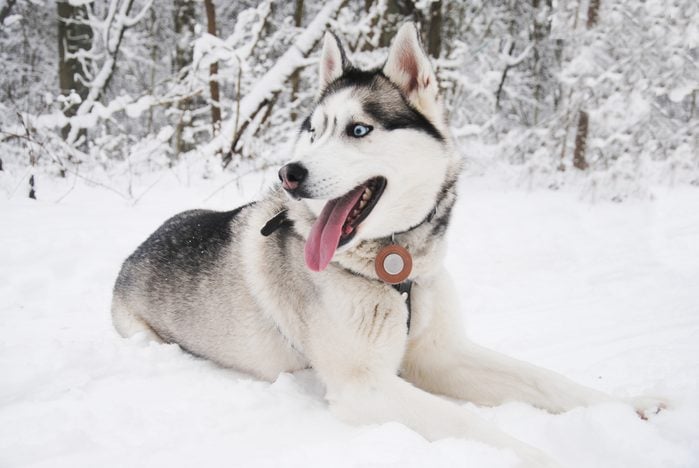
Siberian husky
In a Science study published in the 2000s, researchers named the Siberian husky one of the breeds most closely related to the wolf. But unlike their wolf ancestors, huskies like to bark as well as howl. Huskies have been used for centuries to pull sleds at unbelievable speeds over Arctic snow. Luckily, they’re built for the job. They stay warm courtesy of their dual coat: Like wolves, they have a dense undercoat. “And they have an outer coat made up of guard hairs, which are double the length of the undercoat,” says Dr. McCarthy. All that fur traps heat and insulates them against the cold.
But don’t assume this “wolf dog” breed is all work, no play. Siberian huskies are also fun, loyal companions for pet owners. Just be aware that they’re known for running off and being hard to train.
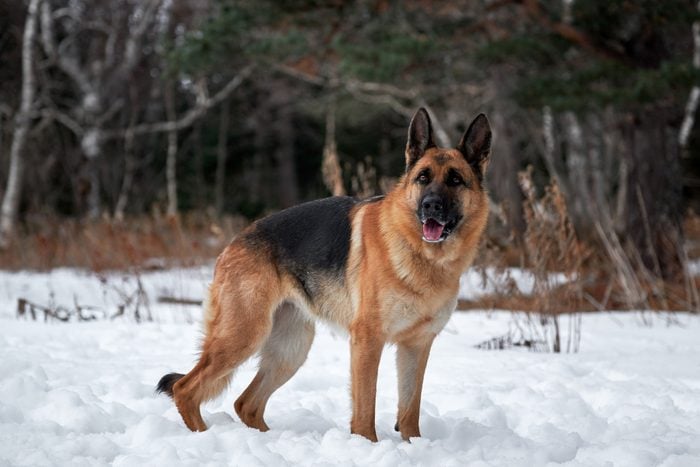
German shepherd dog
German shepherds were once the breed of choice for military and police dogs, and they’ve secured a spot as one of the most popular German dog breeds. It’s hard to match the devotion and loyalty this dog has for its family. It’s one of the most intelligent breeds out there—these dogs learn quickly and excel under the stress of competition. German shepherds are renowned for their undying loyalty to and protectiveness of their families, though they tend to be aloof with other humans and animals, at least initially. But generally, German shepherds are lovey-dovey toward their people and good with children.
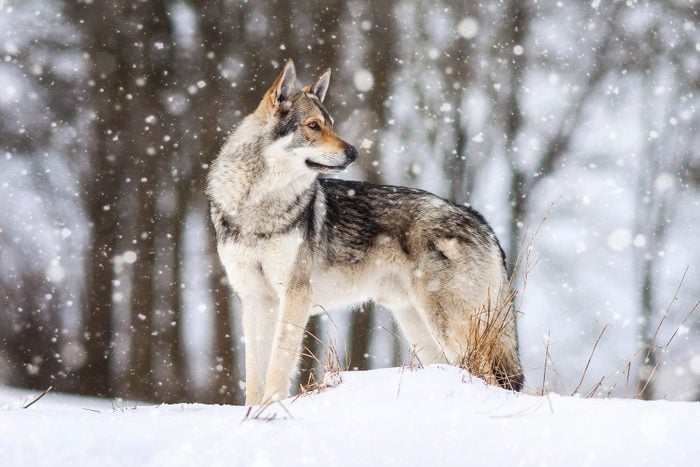
Kugsha
Talk about dogs that look just like wolves! “Known as the Amerindian malamute, the Kugsha is a breed developed in the United States,” says Dr. Savageau. Despite its name, this dog has nothing to do with American Indians. And as for its nickname, Kugsha is a combination of the names of the two men who breed these dogs. Tricky names aside, these are still really cool-looking pups.
If you’ve never heard of the Kugsha before, there may be a reason: It’s actually a wolf hybrid and has been around only since the initial cross in 1984. Because of that, it doesn’t fit any kennel club’s requirement for being an actual breed, and according to its creators, it doesn’t make a good companion.
Kugshas have many wolflike features: pointed ears, a large size, a wide face and a thick coat in shades of gray, white and tan. Their coat is reminiscent of the gray wolf—and requires some upkeep. Kugshas aren’t among the dog breeds that don’t shed, and they require daily brushing. They also need plenty of exercise and mental stimulation (otherwise, they might entertain themselves by chewing and destroying stuff in the house). “Bred for their stamina and strength, they are loyal and independent [and] excel in various dog activities,” Dr. Savageau says.
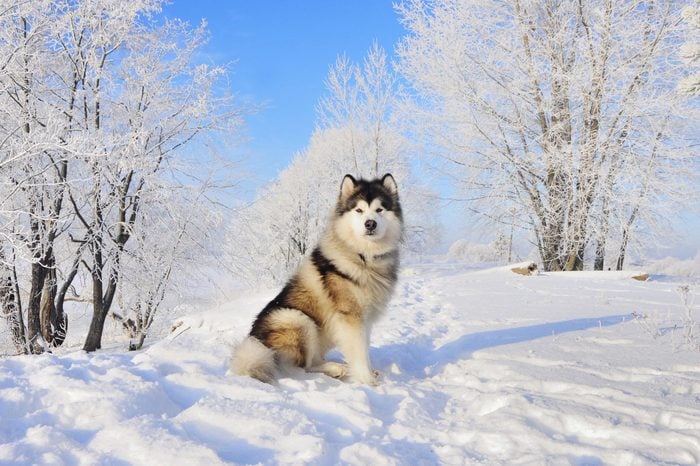
Alaskan malamute
This stunning muscular dog is part of the spitz family and another breed closely related to wolves, according to the Science study. The Alaskan malamute is widely known as a long-distance hauler, pulling sleds with heavy freight. Despite their size and strength, these affectionate dogs may try to climb onto your lap to give you kisses. Alaskan malamutes are truly gentle giants, but because they have a very strong prey drive, they are not typically recommended for families with other small animals. Like all dogs, they prefer to be around family and suffer from severe separation anxiety if left alone for too long. That’s something dogs inherited from their wolf ancestors: Wolves also don’t like being separated from their pack.
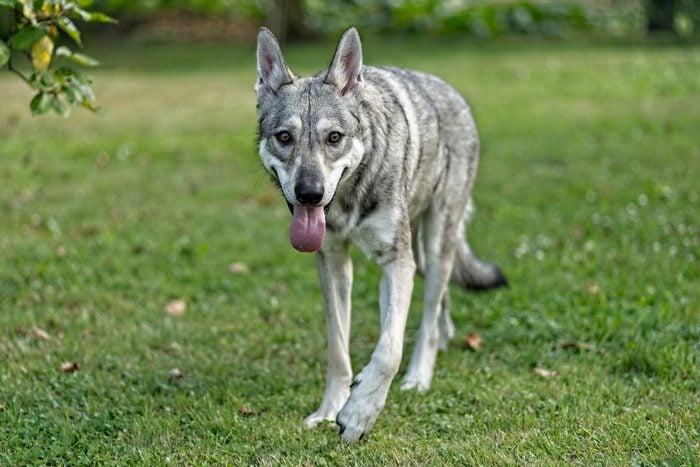
Saarloos wolfdog
The Saarloos wolfdog has a wolflike head shape and facial features, a lean and athletic physique, and strong ties to the wolf. “It originated in the Netherlands and is a crossbreed between a German shepherd and a Eurasian wolf,” says Dr. Savageau. Created in 1935, this gray wolf hybrid is one of the few to make the leap to official dog breed (it’s recognized by the Fédération Cynologique Internationale). In fact, DNA studies show that it has more gray wolf in it than any other breed.
The Saarloos wolfdog’s robust and vigorous nature means it has a ton of endurance, requiring a variety of daily exercises. A home with a vast property to roam and run is essential. Perfect for those who don’t want a lap dog, these pups prefer to sit at your feet. “They’re loyal, reserved and make excellent guard dogs,” Dr. Savageau says. Like wolves, they avoid contact with strangers and foreign environments, but Saarloos wolfdogs are affectionate with their human families.
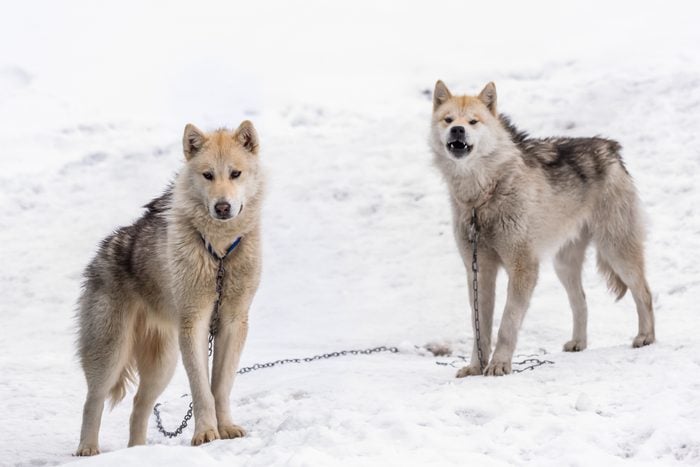
Northern Inuit dog
You may have seen the Northern Inuit dog breed on a popular television show on HBO. The rumors are true: This breed stands in for the dire wolves on Game of Thrones. And a Northern Inuit plays the part of Rollo in the television series Outlander. “Developed in the United Kingdom, the Northern Inuit dog resembles wolves and was originally bred for its wolflike appearance,” says Dr. Savageau.
These dogs come from crosses of several dog breeds, with no wolf in the mix. Even so, these aren’t the best dogs for first-time owners. This breed, while very clever, remains stubborn and challenging to train, so dedication and willingness to take the time to socialize and train your pet properly is essential. Northern Inuits prefer to live in a pack or family, so if you’re building your own “wolf pack,” they would welcome canine siblings.
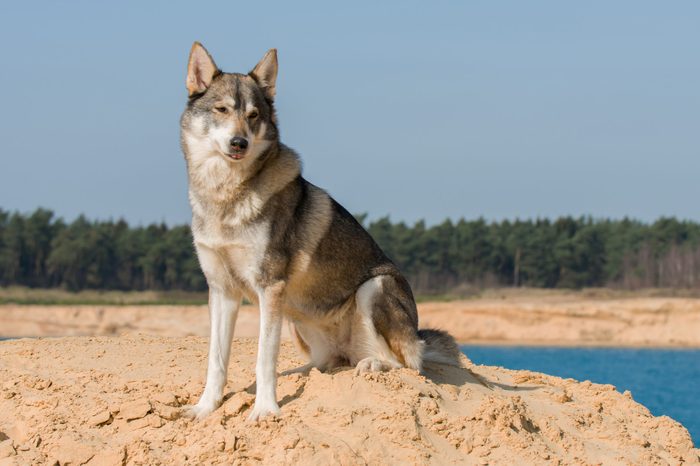
Tamaskan
With striking yellow eyes and long legs, these dogs may come across as intimidating, but they are truly amicable creatures who will give you kisses and snuggles at the drop of a hat. “Originating from Finland, the Tamaskan is a recent breed developed to resemble a wolf and is not directly descended from wolves,” says Dr. Savageau. Want to see a Tamaskan in action? Catch a North Carolina State University game. A Tamaskan named Tuffy III is the school’s mascot.
These large and lanky dogs love physical challenges but are generally more laid-back than some of the other “wolf dog” breeds on this list—except when left alone. Like other breeds, Tamaskans can suffer from separation anxiety if they are by themselves for more than a few hours, and that can lead to destructive behavior.
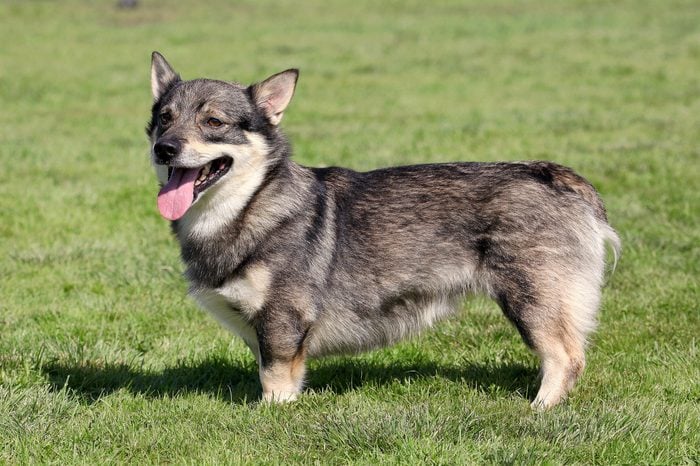
Swedish Vallhund
OK, this short little dude may not look exactly like its ancestors, but if you ignore the short legs, the resemblance is clear. These dwarf dogs with lupine faces are full of energy and cheer. A herding breed, the Swedish Vallhund is very active and needs lots of exercise; if you expect it to lounge on the couch, you’re going to be disappointed.
They love to entertain themselves—and their humans—when bored. This involves lots of barking at anything that moves, including a delivery driver, a curtain blowing in the wind or even a mosquito. You’ll definitely want to nip any bad manners in the bud; this long-living cutie has a life expectancy of 12 to 15 years.
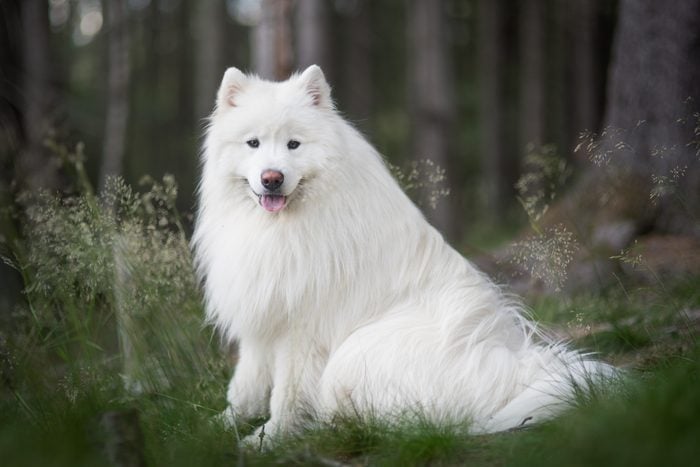
Samoyed
These fluffy pups resemble Arctic wolves with their bushy white fur and stature. Samoyeds began pulling sleds for the Samoyedic people in Siberia, but back in the late 1800s, Queen Alexandra of England became so enamored with the breed that their popularity spread around the world. Their trademark smiling faces and fluffy coats are cuddle-worthy, but they can weigh as much as 65 pounds—not exactly lap dog material. That doesn’t stop Samoyeds from side-snuggling. They are very smart, love to be social and are very affectionate. Like other working Russian dog breeds, Samoyeds need to be kept athletically stimulated and love to voice their feelings with lots of barks, but don’t be intimidated! The iconic (and adorable) Samoyed smile shows just how lovable they really are.
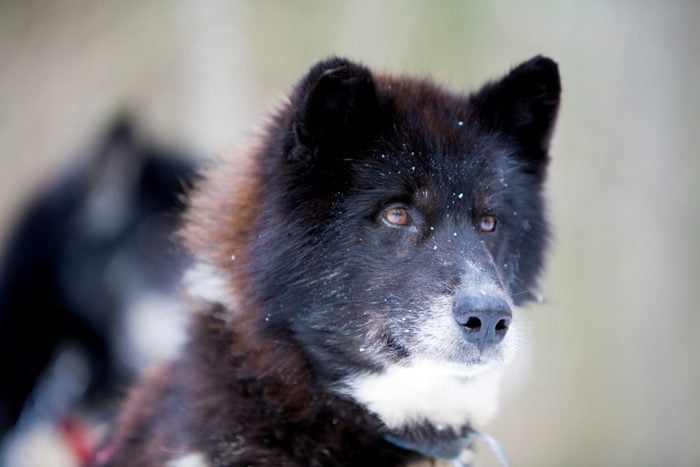
Canadian Eskimo dog
The Canadian Eskimo dog, also known as the Inuit sled dog, is strong, resilient and disciplined after years of fending for itself in harsh arctic environments. They belong to the hefty class of working sled breeds and require more activity than other dogs. They can be lovable companions, but their predatory nature (they typically don’t welcome the company of other dogs outside the family) makes supervision around young children and other pets essential.
If you come across a Canadian Eskimo dog, consider yourself lucky. This is one of the rarest dog breeds, with less than 300 of them left in the world today. “Between 1950 and 1970, the Royal Canadian Mounted Police slaughtered an estimated 1,200 to 20,000 dogs,” says Dr. McCarthy. They were considered disease-ridden public health risks. But in 2019, the Canadian government made a broad apology for its actions. Today, there’s a concerted effort by the Canadian Kennel Club and breeders to bring back the Canadian Eskimo dog.
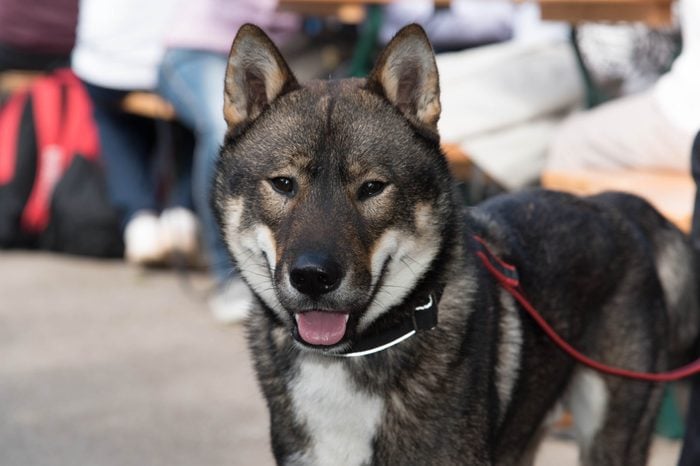
Shikoku
Shikokus are one of the smaller “wolf dog” breeds on our list, but they certainly make up for it in strength and energy. This rugged Japanese dog breed was raised to hunt wild boar in the mountain ranges of Japan in the toughest of environments. Exercise is key to these pups’ happiness and health. Speaking of which: Japanese breeds have an increased risk of allium toxicosis, which causes gastrointestinal upset and severe anemia if they eat garlic, onions, leeks and chives. “Be extra careful when cooking with these and make sure that garbage cans are secured and veggies are stored securely,” says Dr. McCarthy.
Ready to make one part of your family? If socialized from birth and reliably trained, Shikokus do very well with children. But they may not warm up to other dogs without training.
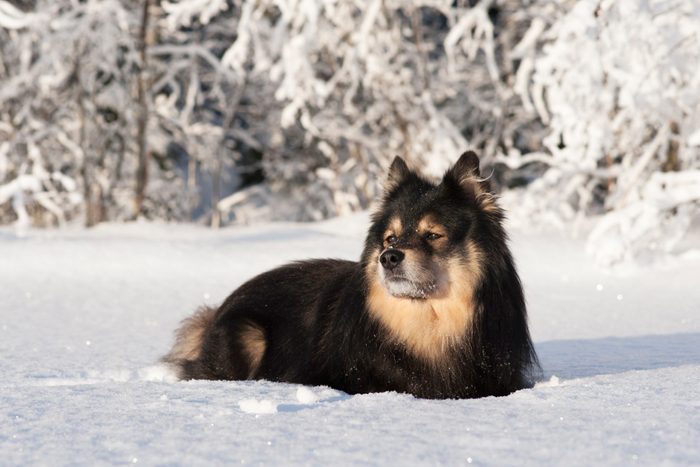
Finnish Lapphund
If you’re looking for a medium-sized dog breed that also loves children, the Finnish Lapphund may be the perfect pet for you. These pups are extremely calm, happy-go-lucky and compassionate in nature, typically fleeing instead of fighting in a threatening environment. They do tend to be very vocal and won’t hesitate to let you know what they’re feeling. This breed is incredibly curious, hardworking and comfortable with life outdoors. Finnish Lapphunds crave companionship and are a great choice for first-time dog owners—unless you’re not a fan of barkers. In that case, you might want to opt for a quiet dog breed instead.
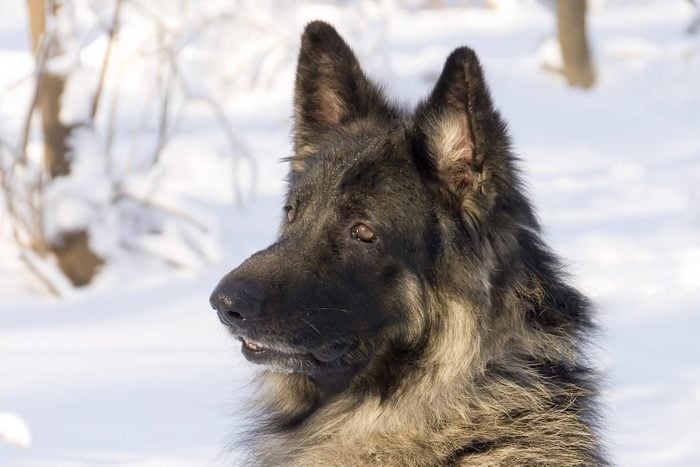
Shiloh shepherd
The Shiloh shepherd was initially bred to expand the German shepherd breed. They look like German shepherds and are about the same size, but their soft and snuggly coats are similar to other fluffy dog breeds. “The Shiloh shepherd is known for its intelligence, calm demeanor and loyalty,” says Dr. Savageau of the breed, which is not yet recognized by any major kennel club. Even though they typically have lower energy levels than the average German shepherd, these dogs were bred to trot all day, so they wouldn’t be content with less than a full day of activity and play.
That’s not to say they don’t have downtime. They were bred to be the ultimate companion and are self-confident, courageous, very affectionate and one of the most easygoing and calm dog breeds.
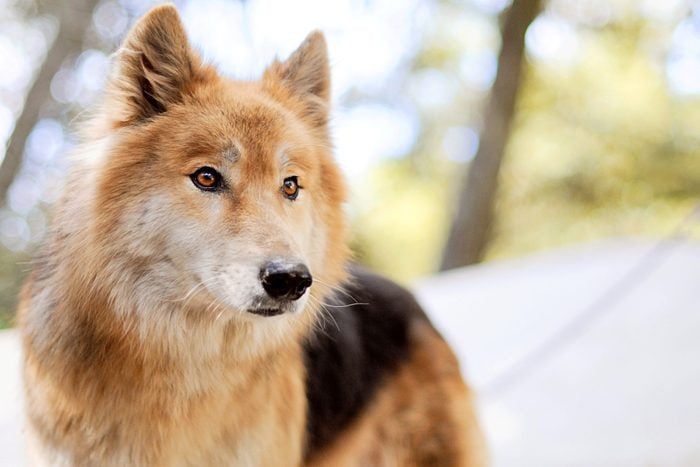
American Alsatian
Did you just do a double take? The American Alsatian is truly a dog that looks like a wolf. It was created by breeders in the late ’80s to mimic the look and size of the extinct dire wolf—minus the temperament of a real wolf. Unlike wolves, American Alsatians are surprisingly calm, and their large frames fit right in with other gentle yet giant dog breeds. A cross between an Alaskan malamute and a German shepherd, the breed was developed to be a devoted companion, not a working dog. The American Alsatian is super affectionate and pretty quiet overall, but it does need lots of room to run around to stay in good health.
It’s worth noting that this breed isn’t recognized by any major kennel club, so it may be harder to find one.
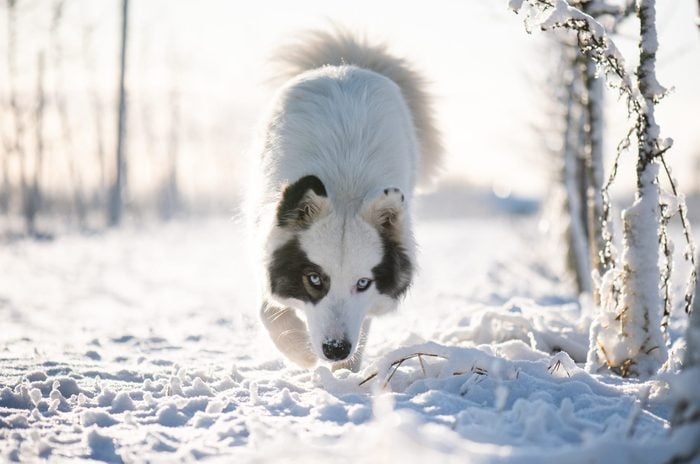
Yakutian laika
Yakutian laikas are hardy and versatile sled dogs hailing from the Arctic regions of Siberia, where they put their sled-pulling and hunting skills to work. “Adapted to extreme cold, they are known for their endurance, strength and loyalty,” says Dr. Savageau. The Yakutian’s dense fur and striking eyes serve as a reminder of its wolf ancestry. These dogs are remarkably gentle, forming tight bonds with humans, especially children, but their friendly nature doesn’t diminish the need for socialization at an early age. The Yakutian laika can be somewhat reserved but will never say no to a new friend. In fact, though they have sensitive noses and ears, their friendliness hinders their ability to be good guard dogs.
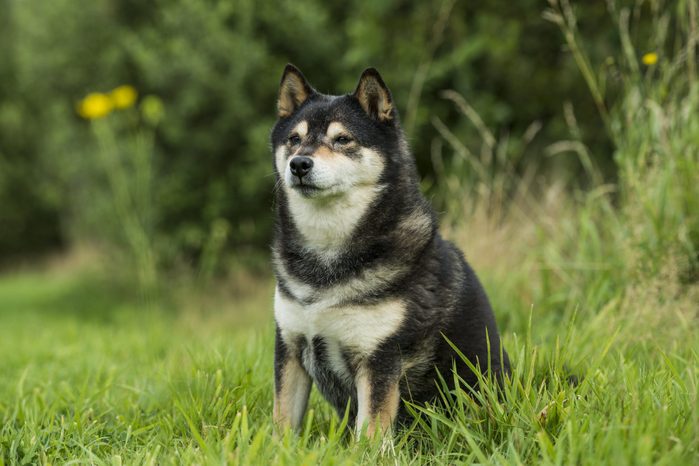
Shiba Inu
This breed may look more like a fox when sporting a reddish coat, but its resemblance to wolves is clear when its coat is a black-and-tan mix. Need more proof that the Shibu Inu belongs among the “wolf dog” breeds? The authors of the Science study name it as one of the dogs most closely linked to wolves from a genetic standpoint.
This ancient Japanese breed was once used for hunting, its ancestors surviving harsh mountain conditions. Today, the Shiba Inu is the top companion dog in Japan and has been growing in popularity in the United States since its introduction in 1954. Shiba Inus are affectionate toward family members and protective in nature, making them good guard dogs.
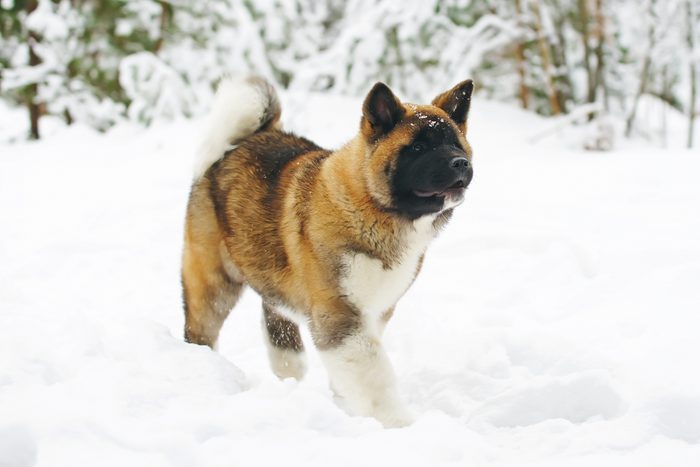
Akita
Like the Shiba Inu, the Akita isn’t as overtly wolflike as others on this list. But also like the Shiba Inu, this Japanese breed has been named by researchers as one with a close genetic link to wolves. Big-boned and burly, with a thick coat and large head, this breed is a sight to behold.
Akitas are full of energy and tend to be a bit stubborn and willful, but they are exceptionally protective and loving toward their family. Their attitude toward other dogs is a different story. They generally don’t get along well with other dogs, especially those of the same sex. This is a good breed for committed pet owners who are willing to properly train their dog to prevent aggression.
Why trust us
At Reader’s Digest, we’re committed to producing high-quality content by writers with expertise and experience in their field in consultation with relevant, qualified experts. For this piece, Lisa Marie Conklin tapped her experience as a longtime pet journalist, and then Caroline Coile, PhD, an award-winning journalist specializing in canine breeds, health and science, gave it a rigorous review to ensure that all information is accurate and offers the best possible advice to readers. For this piece, we relied on reputable primary sources, including professional organizations and academic studies, as well as our writer’s personal experience. We verified all facts and data and backed them with credible sourcing, and we will revisit them over time to ensure they remain accurate and up to date. Read more about our team, our contributors and our editorial policies.
Sources:
- Matthew McCarthy, DVM, veterinarian and founder of Juniper Valley Animal Hospital in New York City; email interview, Feb. 5, 2024
- Nicole Savageau, DVM, veterinarian at The Vets in Austin, Texas; email interview, Jan. 27, 2024
- Nature Reviews Genetics: “Animal domestication in the era of ancient genomics”
- Science: “Genetic structure of the purebred domestic dog”

